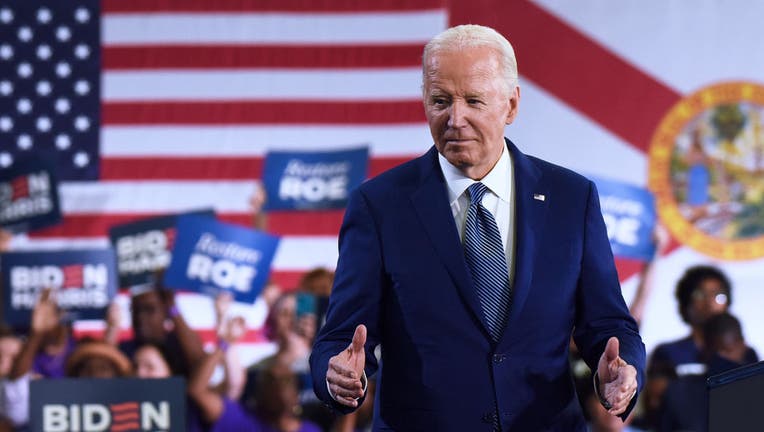These salaried workers are now eligible for overtime pay

U.S. President Joe Biden gestures while speaking at a reproductive freedom event at Hillsborough Community College on April 23, 2024 in Tampa, Florida.
WASHINGTON - The Biden administration has introduced a significant regulation to extend overtime pay eligibility to a larger number of salaried employees in the U.S.
This development represents the most substantial expansion of federal overtime provisions in many years.
New rule details
The rule mandates that salaried employees in specific executive, administrative, and professional positions earning under $43,888 annually must receive overtime pay from July 1, as stated by the Labor Department on Tuesday. This threshold is set to increase to $58,656 by early 2025.
"Too often, lower-paid salaried workers are doing the same job as their hourly counterparts but are spending more time away from their families for no additional pay. That is unacceptable," acting Secretary of Labor Julie Su said in a prepared statement.
The newly established regulation dramatically raises the bar from the existing overtime pay eligibility limit of $35,568, a figure instituted in 2019 during the Trump administration.
This adjustment comes after a more ambitious attempt during the Obama administration was blocked in court three years prior, following opposition from various business figures and Republican lawmakers.
Legal framework for overtime
According to U.S. federal law, almost all hourly employees are entitled to overtime compensation after 40 work hours per week. However, this requirement does not cover many salaried employees unless their earnings fall below a specified amount.
Economic outlook: Shrinking inflation, job creation
The U.S. economy is having what some experts are calling a "Goldilocks" moment. A panel of economists expect this year to be characterized by faster growth, shrinking inflation and healthy job creation. The National Association for Business Economics predicted that gross domestic product will rise 2.2% in 2024, a significantly more bullish forecast than what the group projected only two months ago.
The latest adjustments broaden overtime pay eligibility to include more highly compensated employees. A Labor Department FAQ indicates that these workers' current annual salary cap, set at $107,432, will rise to $132,964 on July 1 and further increase to $151,164 by the beginning of 2025.
Projections for expanded eligibility
The Labor Department projects that approximately 4 million salaried employees, presently exempt due to their lower wages, will qualify for overtime protection in the rule's first year. Additionally, around 292,900 employees with higher compensation are anticipated to gain overtime benefits.
The July 1 modifications adjust existing salary thresholds using a methodology established by the Trump administration’s 2019 regulations. According to the Labor Department, this approach will officially start on Jan. 1, with planned updates to the salary thresholds every three years based on recent wage data.
This story was reported from Los Angeles. The Associated Press contributed.

